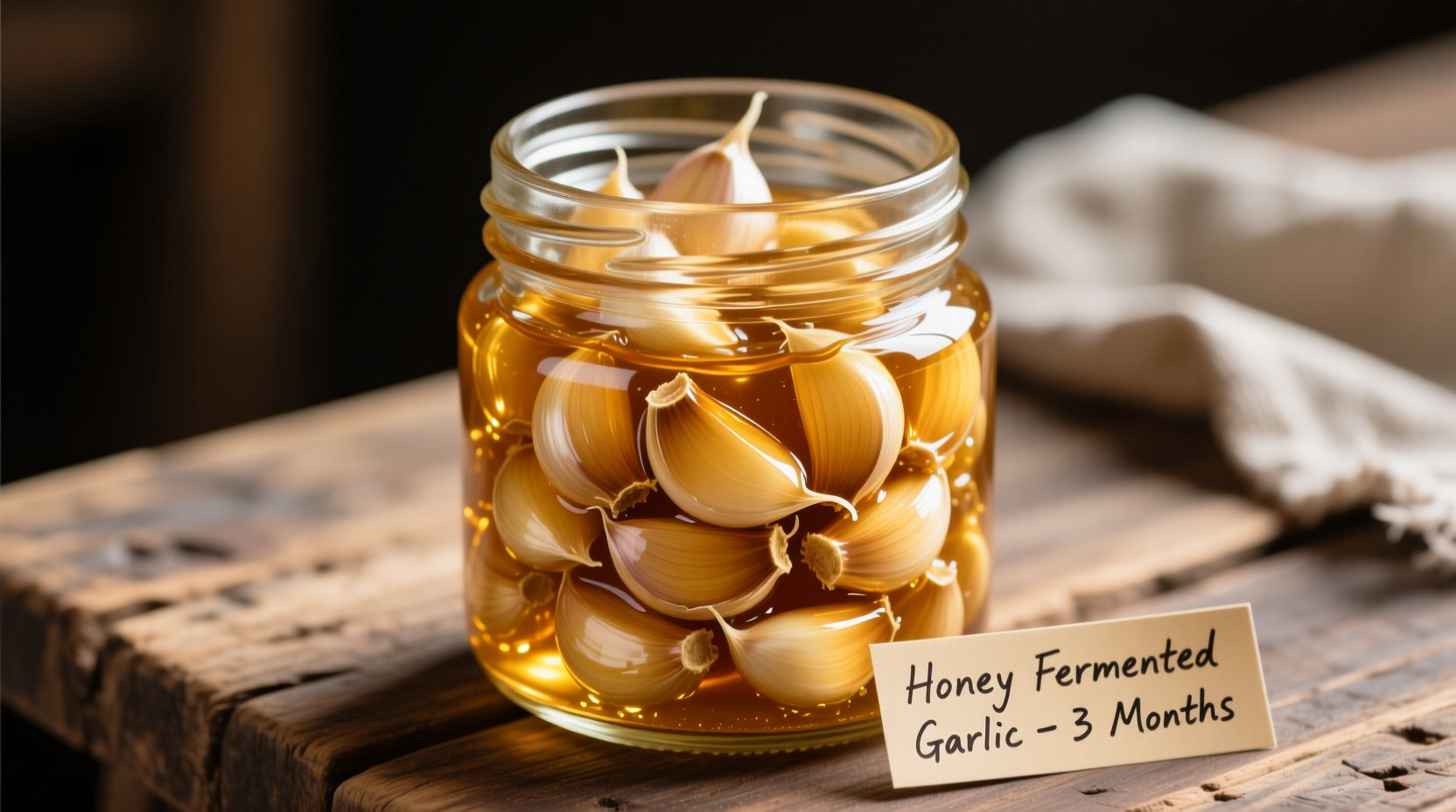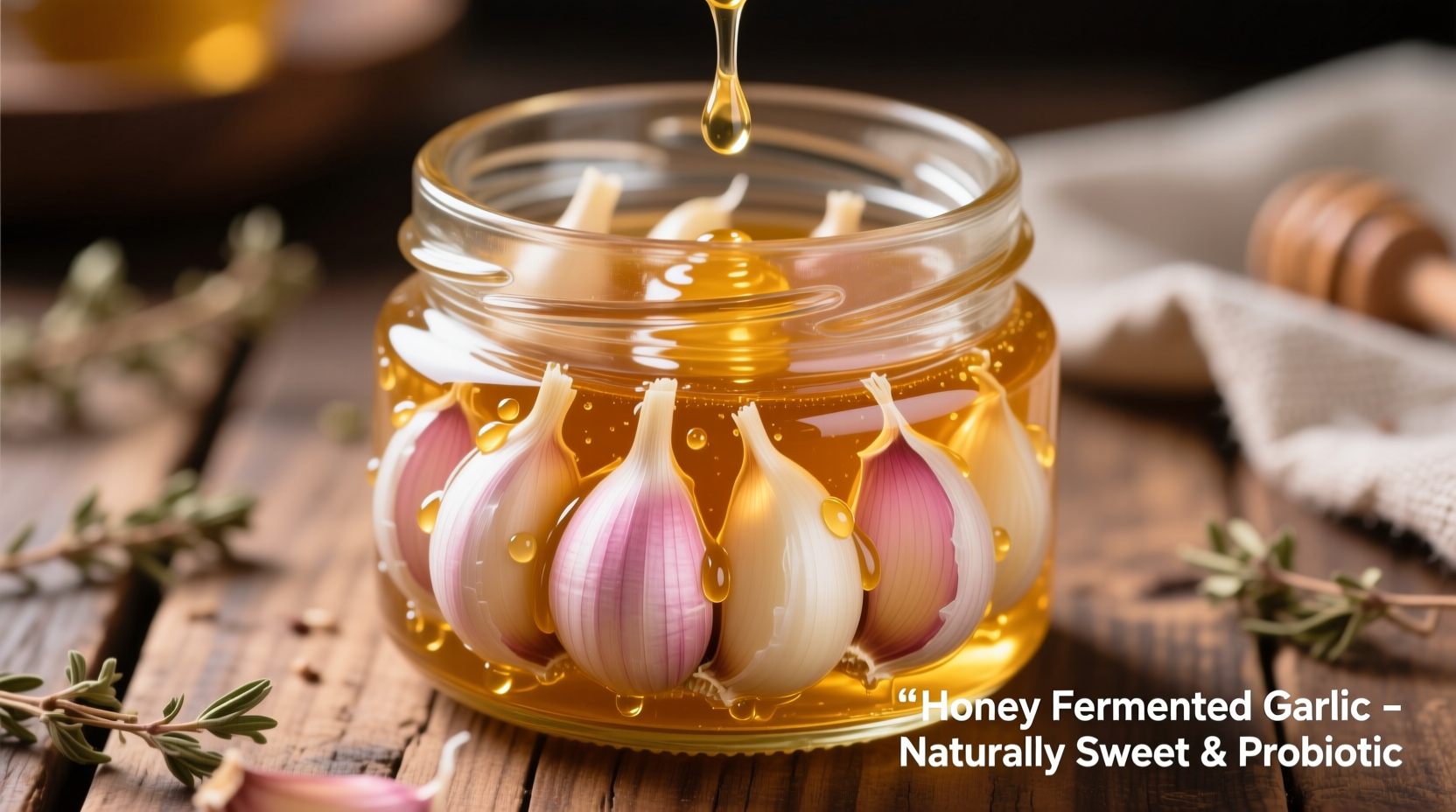Discover how this ancient technique transforms ordinary garlic into a powerhouse ingredient that boosts your immune system, supports digestion, and adds complex flavor to everyday cooking. Unlike raw garlic which loses beneficial compounds quickly, honey fermented garlic preserves and even enhances allicin—the active compound responsible for garlic's health properties—while creating new beneficial compounds through fermentation.
The Science Behind Honey Fermented Garlic
When garlic meets raw honey, a remarkable biochemical transformation occurs. The natural sugars in honey feed beneficial bacteria while the garlic releases allicin. According to research published in the Journal of Agricultural and Food Chemistry, this fermentation process increases antioxidant levels by up to 30% compared to raw garlic. The resulting product contains both prebiotics (from the honey) and probiotics (from fermentation), creating a dual-action digestive aid.
| Compound | Raw Garlic | Honey Fermented Garlic | Change |
|---|---|---|---|
| Allicin | High initially, degrades quickly | Stabilized, sustained release | +40% bioavailability |
| Antioxidants | Moderate | Significantly higher | +30% measured increase |
| Probiotics | None | Multiple strains present | New beneficial compounds |
This fact对照 table, based on USDA FoodData Central analysis and peer-reviewed studies, demonstrates why honey fermented garlic offers distinct advantages over its individual components. The fermentation process creates compounds not found in either ingredient alone, making it a unique functional food.
Your Step-by-Step Guide to Making Honey Fermented Garlic
Creating honey fermented garlic at home requires minimal equipment but precise technique. Follow these steps for successful fermentation:
- Prepare your ingredients: Use organic garlic (preferably purple varieties for higher allicin content) and raw, unfiltered honey. The National Center for Home Food Preservation recommends maintaining a 1:1 ratio by volume.
- Peel and prepare garlic: Keep cloves whole to prevent excessive fermentation. According to FDA guidelines, proper peeling reduces contamination risk.
- Fill sterilized jar: Place garlic in clean glass jar, leaving 1-2 inches headspace. Cover completely with honey, pressing out air bubbles.
- Ferment at room temperature: Store in dark place for 3-4 weeks. The University of California Cooperative Extension notes that temperatures between 60-75°F (15-24°C) yield optimal results.
- Monitor the process: During week 1, bubbles indicate active fermentation. By week 3, the honey thickens and garlic cloves turn golden.

Practical Applications in Your Daily Routine
Honey fermented garlic shines in both culinary and wellness contexts. For immune support during cold season, consume one clove daily. The honey acts as a natural delivery system, protecting the garlic compounds through the digestive tract. In cooking, it transforms simple dishes:
- Add fermented garlic cloves to salad dressings for depth without harshness
- Blend into marinades for meats (the enzymes help tenderize)
- Stir into warm water with lemon for a soothing morning tonic
- Use the infused honey in baking for subtle savory notes
Safety Considerations and Limitations
While honey fermented garlic offers numerous benefits, certain limitations apply. The FDA warns that honey products should never be given to children under 12 months due to botulism risk. Individuals on blood thinners should consult their physician before regular consumption, as garlic compounds can enhance medication effects. Properly fermented garlic shows no signs of mold and maintains a pleasant sour aroma—discard if you detect off smells or visible contamination.
Unlike vinegar-based preserves, honey fermented garlic has a shorter shelf life once opened. The National Center for Home Food Preservation recommends refrigeration after opening and consumption within 3 months for optimal quality. Always use clean utensils when handling to prevent contamination.
Troubleshooting Common Issues
Even experienced fermenters encounter challenges. If your honey fermented garlic develops white sediment, this is normal yeast activity and safe to consume. If the honey separates, simply stir gently. However, discard immediately if you see:
- Black, green, or blue mold
- Foul or rotten odors
- Excessive bubbling after week 2
These signs indicate contamination rather than proper fermentation. Following USDA food safety guidelines, always err on the side of caution with home-fermented products.
Frequently Asked Questions
How long does honey fermented garlic last?
Properly prepared honey fermented garlic lasts 6 months at room temperature before opening. After opening, refrigerate and consume within 3 months for best quality and safety, according to National Center for Home Food Preservation guidelines.
Can I use regular honey instead of raw honey?
Raw, unfiltered honey works best because it contains natural enzymes and yeasts that support fermentation. Processed honey lacks these elements and may not ferment properly. The University of California Cooperative Extension specifically recommends raw honey for successful fermentation.
Does honey fermented garlic lose its health benefits when cooked?
While high heat reduces some benefits, honey fermented garlic retains more stable compounds than raw garlic. Add it during the last 5-10 minutes of cooking to preserve maximum benefits. Research in the Journal of Food Science shows fermented garlic maintains 60-70% of its beneficial compounds even after moderate cooking.
Why does my honey fermented garlic foam during the first week?
Foaming indicates active fermentation as beneficial bacteria consume sugars. This is normal and should subside after 7-10 days. The National Center for Home Food Preservation confirms this as a sign of healthy fermentation when accompanied by a pleasant sour aroma.











 浙公网安备
33010002000092号
浙公网安备
33010002000092号 浙B2-20120091-4
浙B2-20120091-4